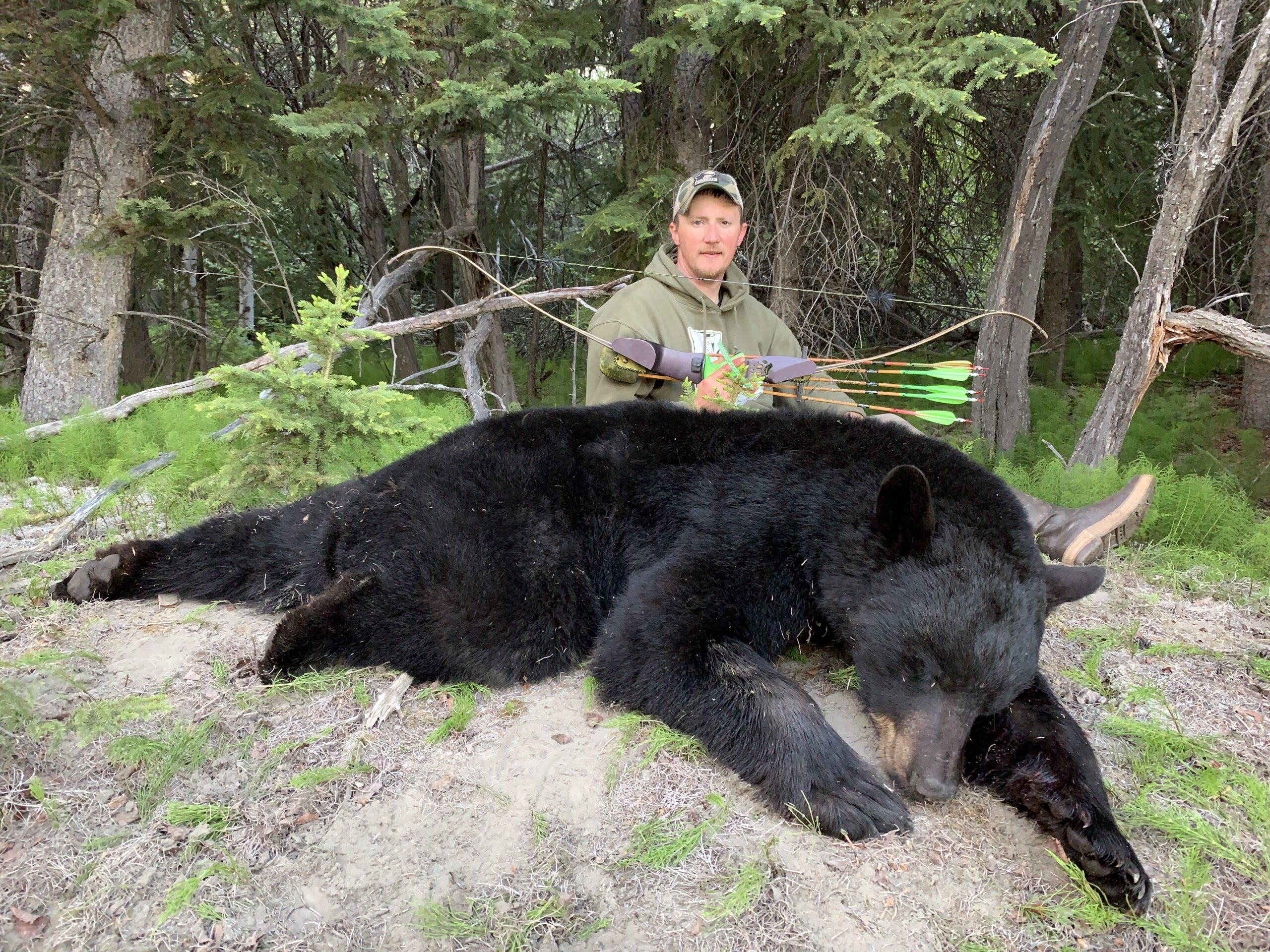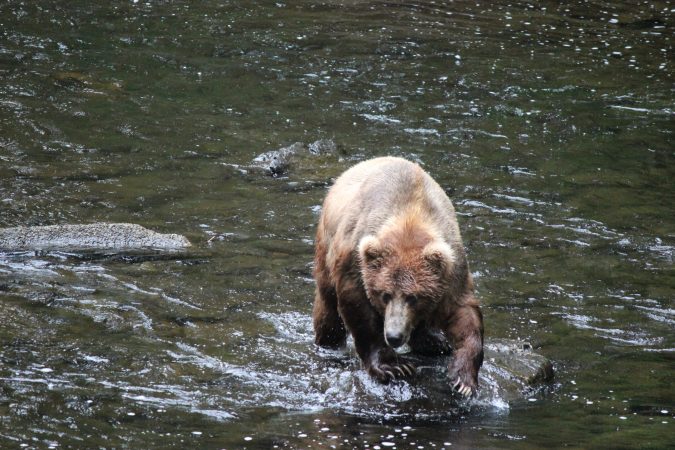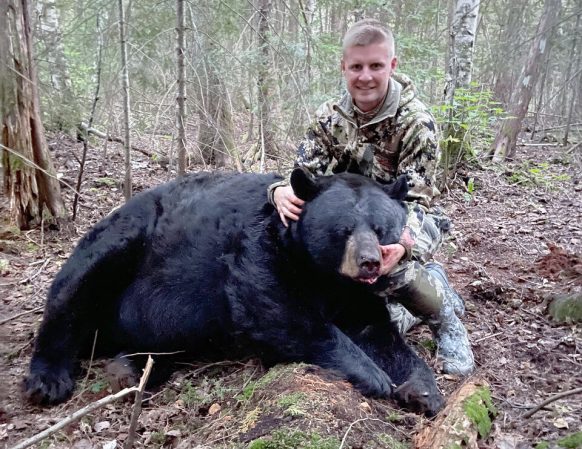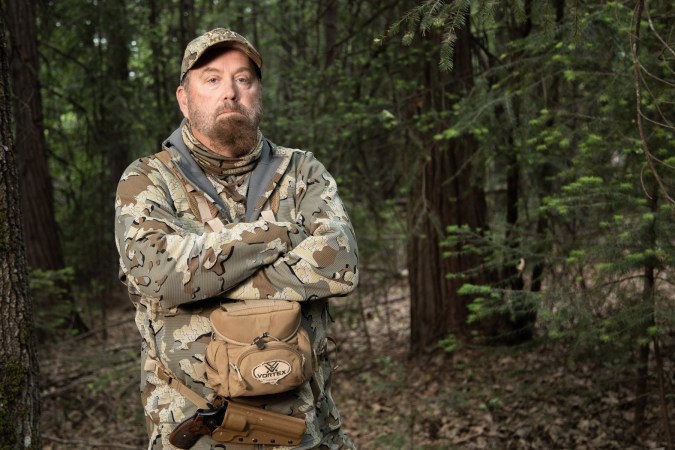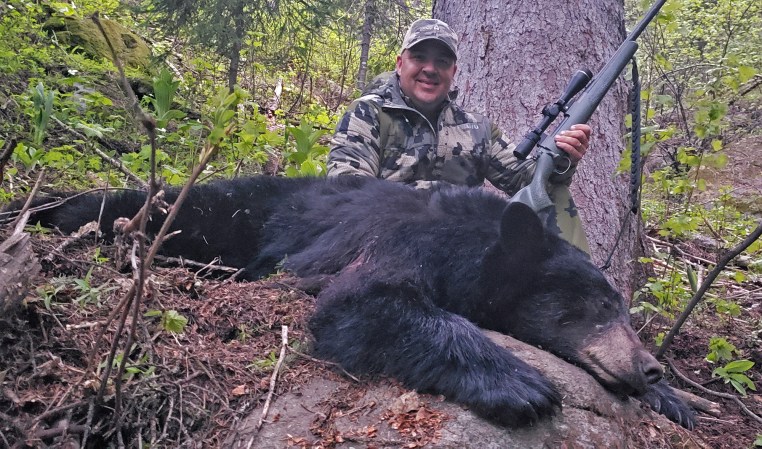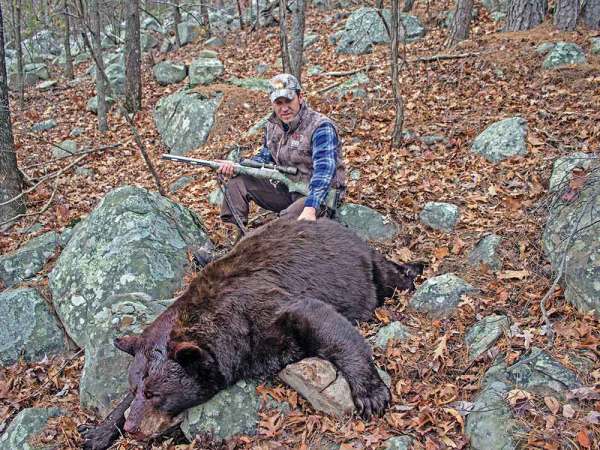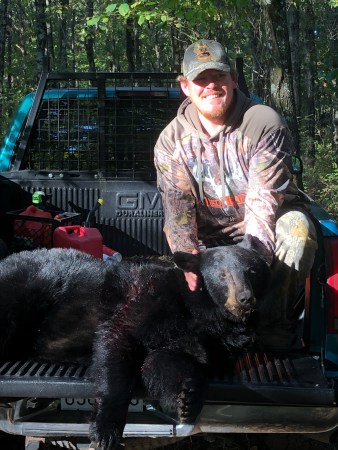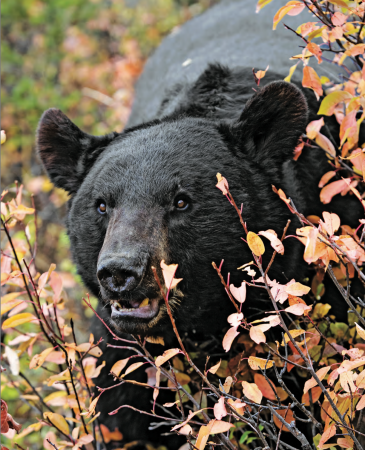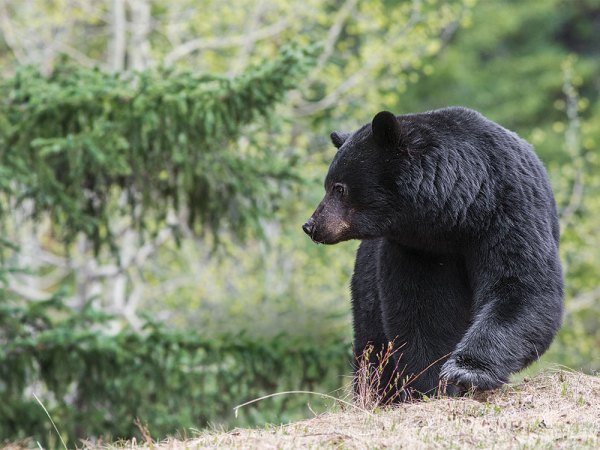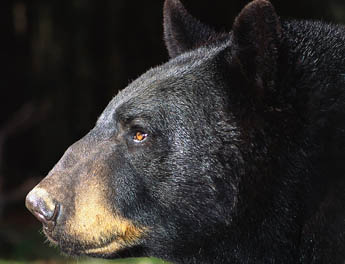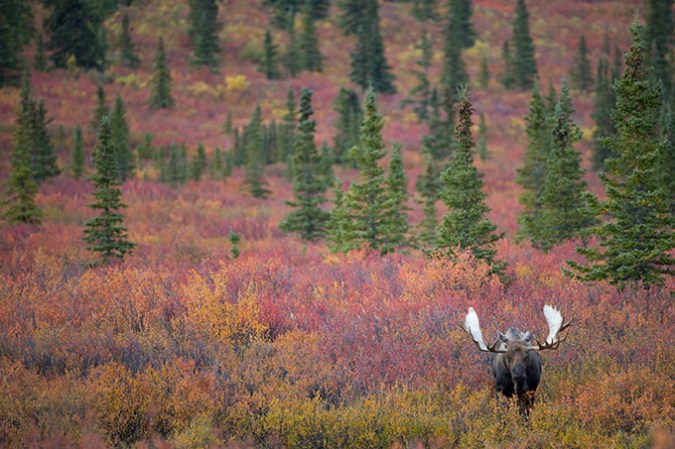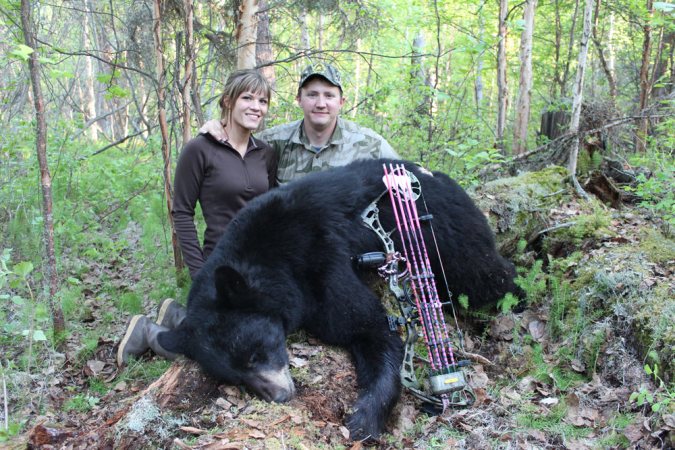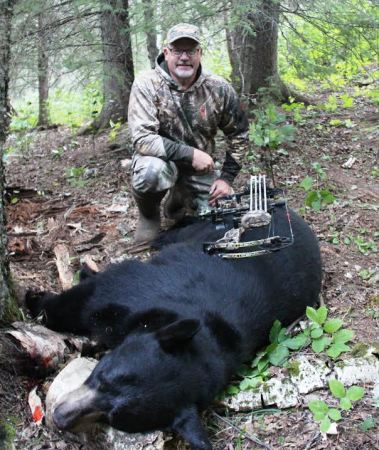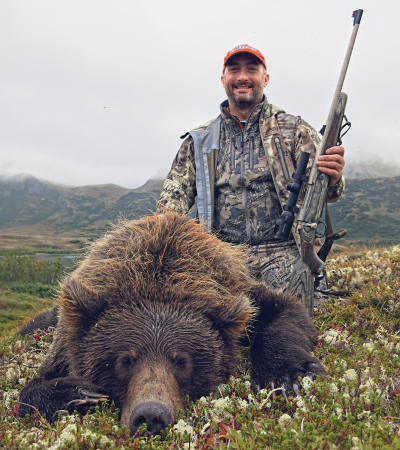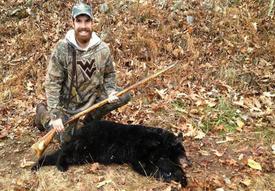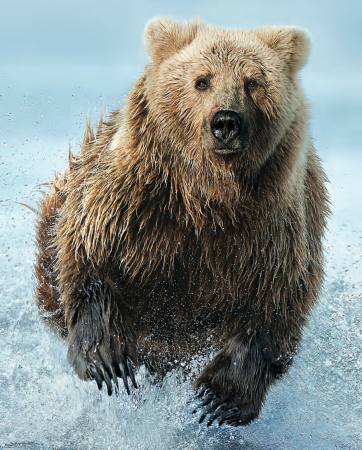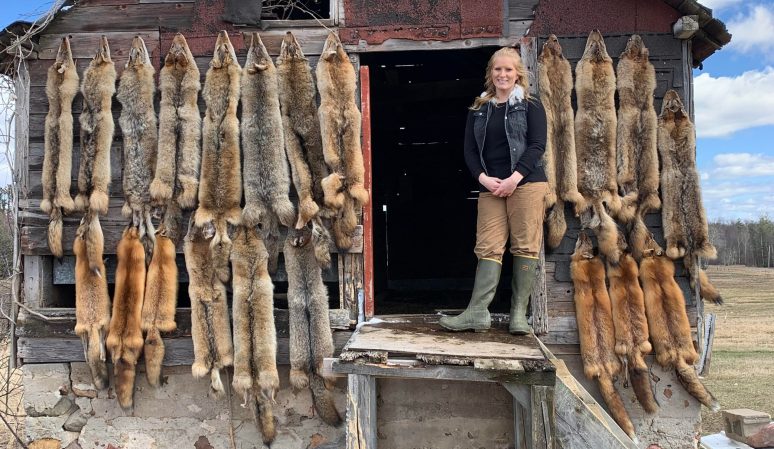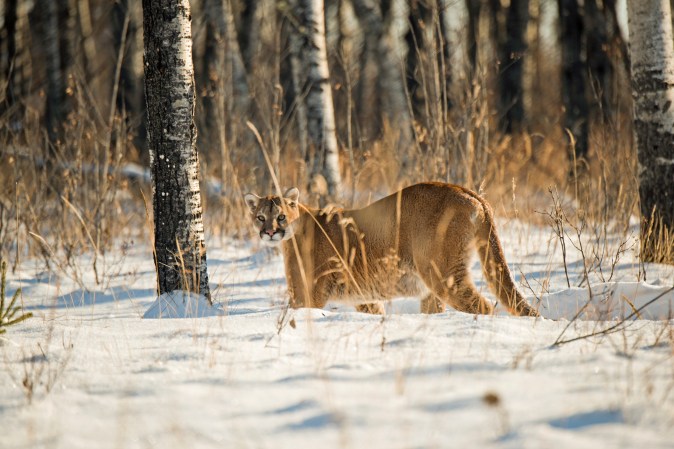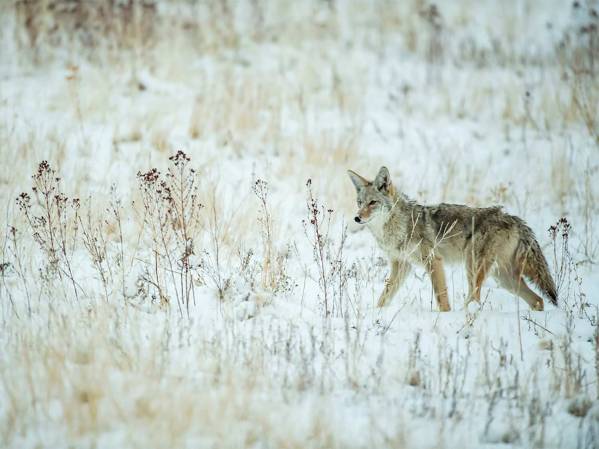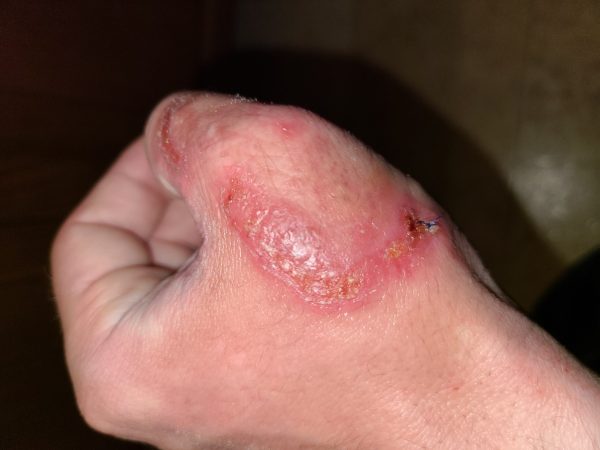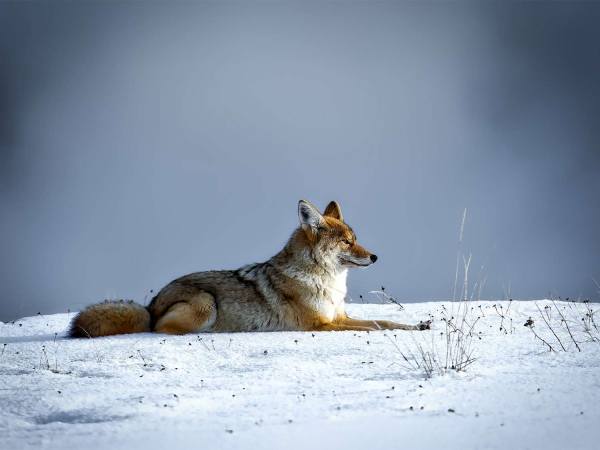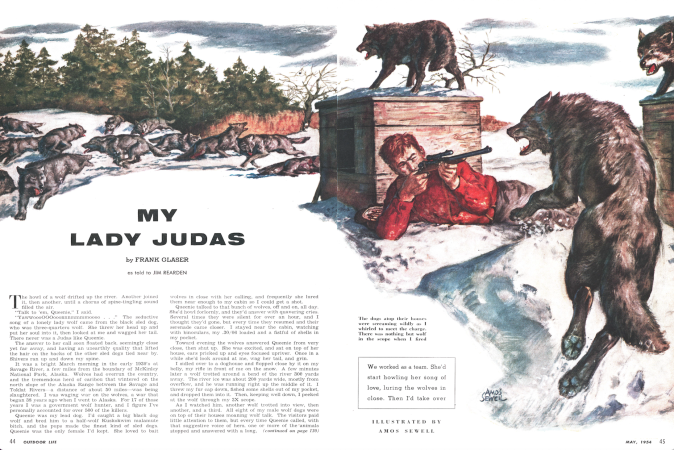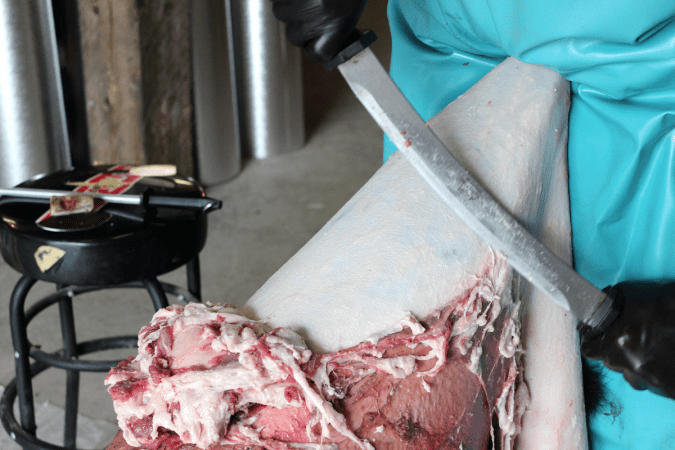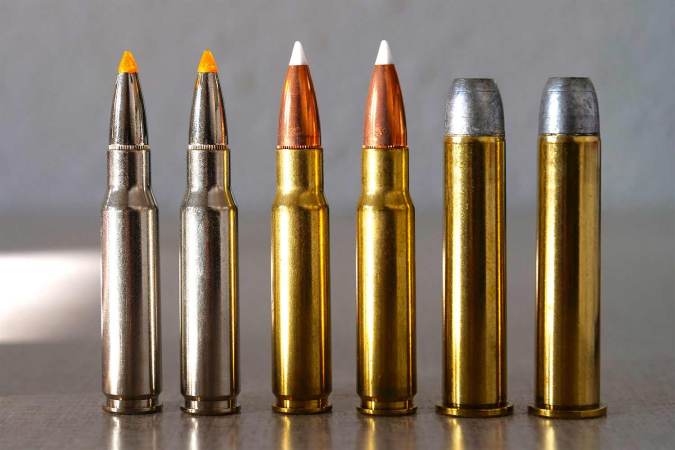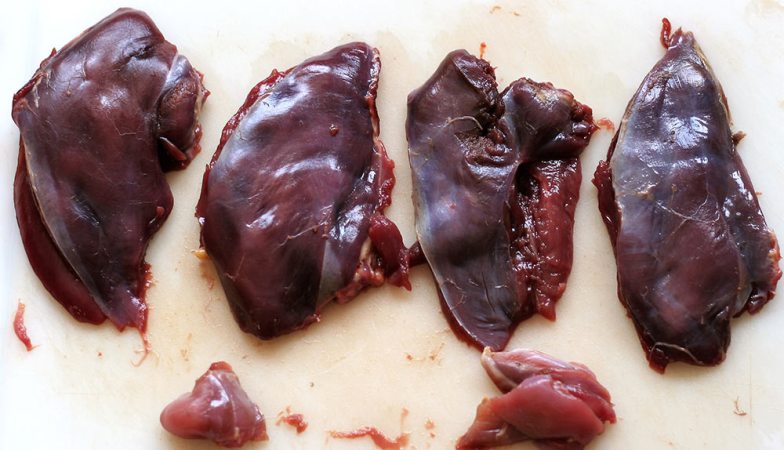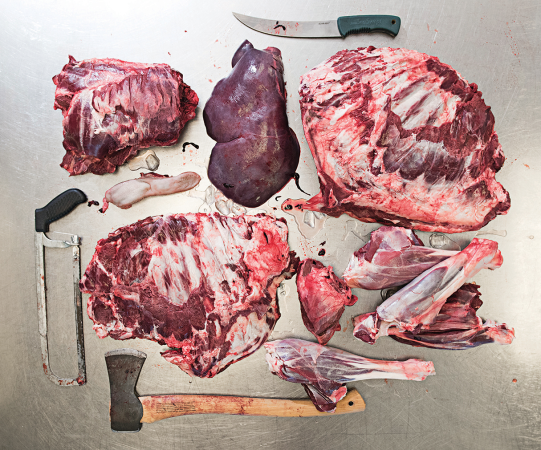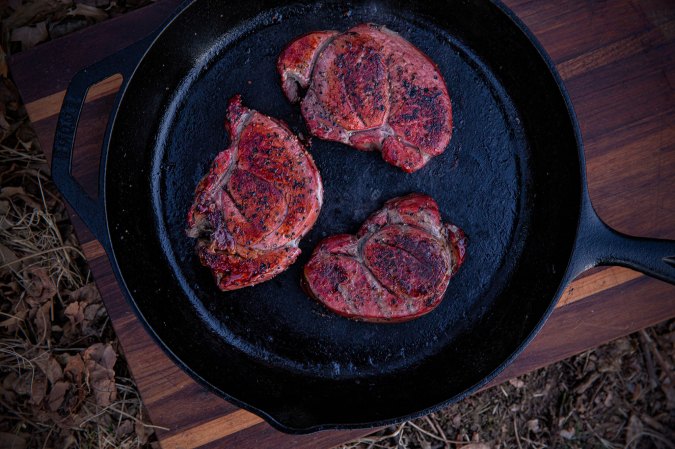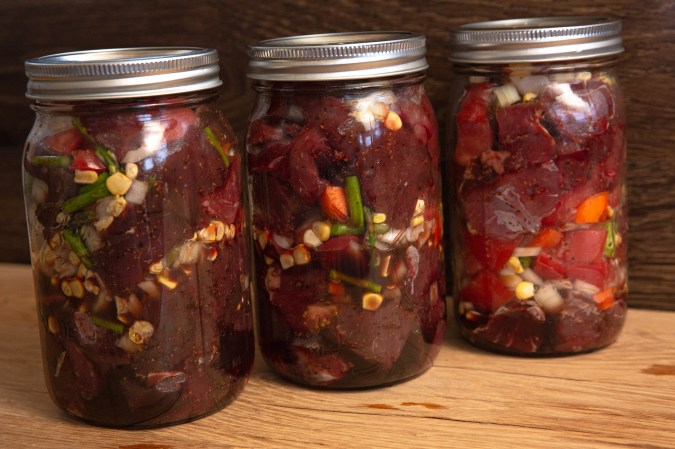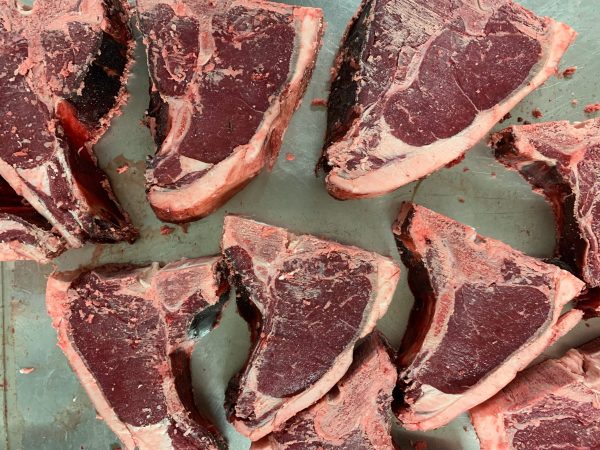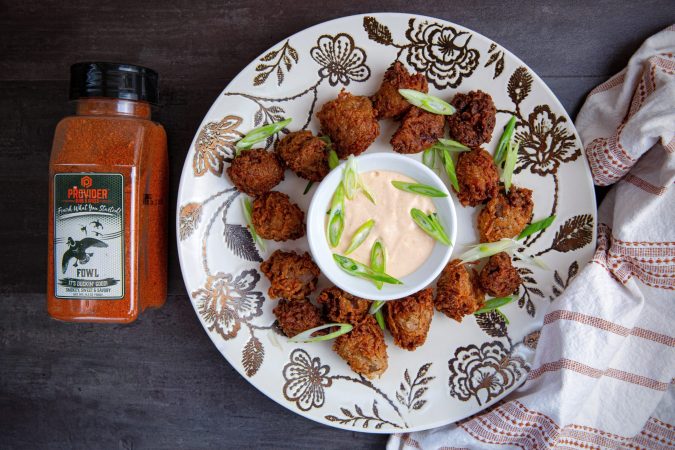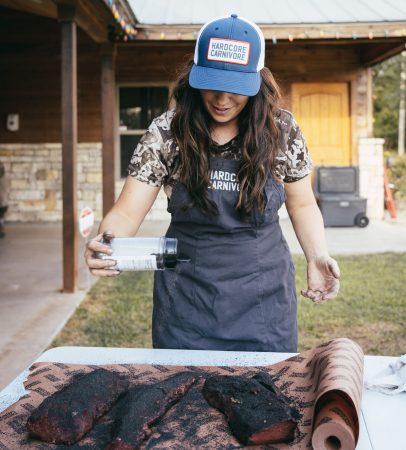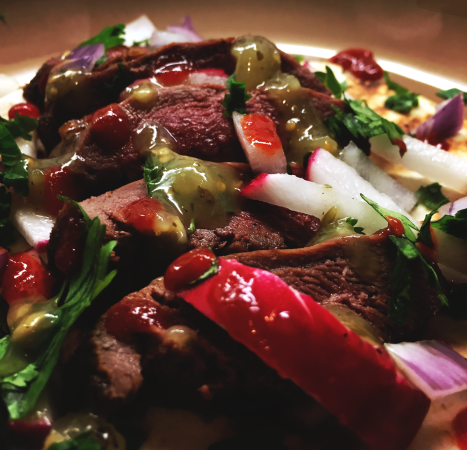Bear hunting has received plenty of exposure in recent years, and hunters are even seeing renewed opportunities in places like Missouri and New Jersey. but many people still don’t realize the value of bear meat. Some don’t even think it’s edible.
I’ll admit, bear meat is a little different than the deer, elk, or moose that many big-game hunters associate with a well-stocked freezer. In some ways, I consider it second tier meat—you won’t find me cooking bear steaks when I have moose in the freezer—but bear meat fills some great niches and is excellent when cared for and prepared properly.
The Pros and Cons of Bear Meat
As with any animal, but especially omnivores, you can run into bad tasting ones now and then. Bears that have been feeding on salmon and carrion are often not palatable, and the rancid smell of the meat itself will be a good indicator. However most black bears make fine table fare. When cared for properly, they make excellent eating. It’s critical to get the animal skinned promptly, keep the meat clean, and trim the excess fat from the meat for best results.
More than a few hunters here in Alaska like eating grizzly meat as well, but of the several grizzlies I’ve tried to eat, none were fit for a dog. Like any animal, diet plays a huge role, and perhaps the bears I’ve tried all jumped straight to the rotten winterkill diet—that’s what they smelled like anyway. I’m sure that any bear (grizzly or black bear) that’s only been eating berries for a couple months is going to taste just fine.
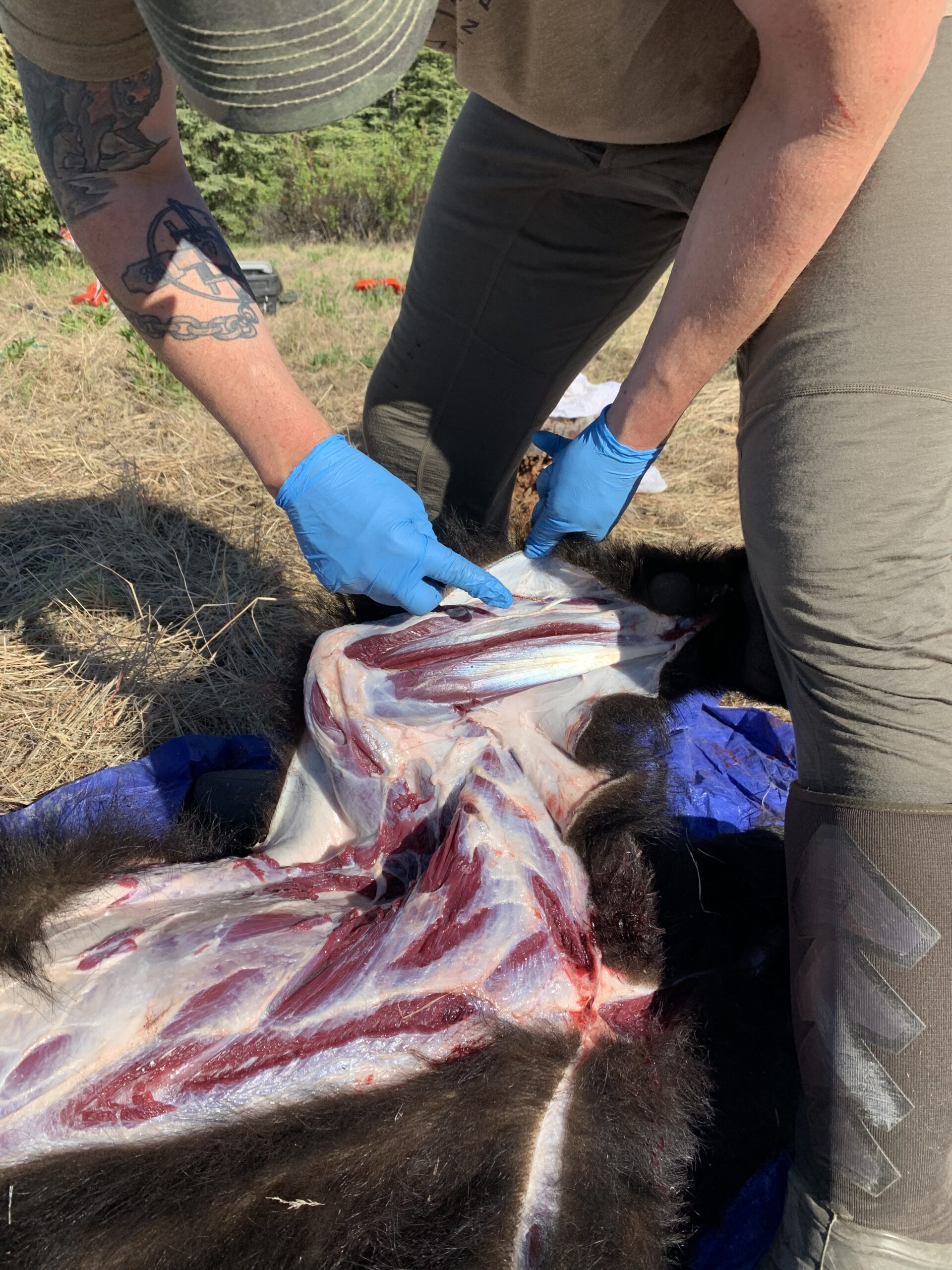
Spring vs. Fall Bear Meat
Black bears have dark, rich meat and, depending on the season, will have a significant layer of fat that can be rendered for baking and used for many other purposes. Spring black bears are almost always excellent to eat. Depending on the region and timing of the season, they often have been feeding only on fresh greens, and haven’t gotten into too much fish or carrion. Spring bears usually won’t have too much fat since it’s been depleted throughout hibernation.
In areas where bears have been feeding on salmon, it’s a roll of the dice whether your fall bear will have edible meat. However, in most areas that we can hunt bears in the United States, that’s not a factor. Fall bears are prized in many areas because they’ve been feeding on berries, acorns, or other crops, and have a healthy layer of fat. Good bear fat can be used in a number of ways, and it should be trimmed off the bear meat while processing.
Three Simple Methods for Cooking Bear Meat
You can get creative with bear meat of course, but here in Alaska there’s not much call for fancy recipes, and there are three simple ways that I like to prepare bear meat. Remember that bears often carry nasty parasites, but you will be fine if you always make sure to cook the meat to an internal temperature of 165℉. I often go higher than that just to make sure it’s safe for consumption.
Here are my three favorite ways to prepare and eat black bear meat.
Bear Meat On the Grill
I don’t grill a lot of bear meat, but there is one way I’ve come to really enjoy it. I typically will do this when I have a fresh bear that I’ve just skinned and butchered. When breaking down the bear, I cut the backstraps off and leave the top half of the ribs attached. I use my knife to separate the backstrap from the spine, then use a saw to detach the ribs from the spine, trim off the bottom (belly) half of the ribs, leaving a backstrap attached to a half-rack of ribs. This also works fine with a section of backstrap that’s bone-free. After cooking, you can slice it into tomahawk-like steaks.
Seasoning this bear meat is simple. Just cake all sides of the meat with a dry rub seasoning, then sear all sides on a raging hot grill or cast-iron pan. I have a Camp Chef smoker that I’ll finish it on. After searing, I’ll put it on the grill at about 225℉ to finish it with a smoke. I use a temperature probe (many Camp Chefs come with electronic probes that hook into your grill), and as soon as the center of the meat hits around 170℉, I take the meat off and let it rest.
READ NEXT: Best Wireless Meat Thermometers
Slice the backstrap between each rib, and you’ve got something like a little black bear lollipop. This isn’t the only way to grill black bear; it’s just my personal favorite. The key is temperature, checking the meat so that it’s safe, but not overdone, which will make it tough and dried out. With this method and cooked to the right temperature, I usually get an ultra-tender, and very juicy finished product.
Irish-Style Bear Meat
If you happen to be a fan of corned beef, then you’re in luck. Black bear meat corns up about as nicely as anything. It’s also a surefire way to know that it’s going to be both delicious and cooked well enough for safe eating.
The nice thing about corning is it’s flexible. You don’t have to have specialty cuts of meat, and it lends itself to being a low-waste method of cooking. I happen to own an antique Butcher Boy band saw. After freezing hind quarters solid, I’ll knock out bone-in cross sections 1½ to 2 inches thick, all the way down the hind quarter, wrap them, then put them back in the freezer. If you don’t have a saw, don’t fret—this will work with just about any roast or loin.
There are a lot of good beef and wild game corning recipes out there, one of which you can check out in the video above. Most of them involve canning and pickling salt, tender-quick, pickling spice, and some peppercorns. You’ll make a simple brine and submerge the roast in there for up to 48 hours, rotating once daily. Finally, rinse the roast and throw it in a crock pot with a bit of fresh water in the morning. By dinner time, you’ll be able to shred it with a fork. You can make all the sandwiches you want, and even have it with cabbage.
Read Next: Take Your Wild-Game Cooking to the Next Level With These 11 Essentials
Bear Sausage
Snack sticks are the easiest way to process bear meat. Tyler Freel
My favorite way to prepare bear meat is in the form of smoked sausages. I mostly make the thinner hunter sticks. They are good for snacking in the woods or just watching TV on the couch at home. Bear meat also makes great summer sausage.
Although it takes some work and a little tooling to make the sausage myself, I end up with a product that is simple, very low-waste, fast, easy, convenient to eat, and absolutely delicious. Most game processors can make these types of products, but I prefer to do it myself. If you have a meat grinder, sausage stuffer, and a smoker or pellet grill, you can do it too. I’ve found a meat mixer to be a huge asset as well.
I begin while I’m processing the bear at home. Most of the time, I will strip all the quarters, ribs, and any other meat off the bear and cut it into grindable chunks, pack it in gallon freezer bags, and freeze until it’s sausage-making time. If you have a good grinder and sharpen your blades, you don’t have to be terribly picky trying to remove every little tendon, and you can utilize a lot of meat that would otherwise be trimmed away.
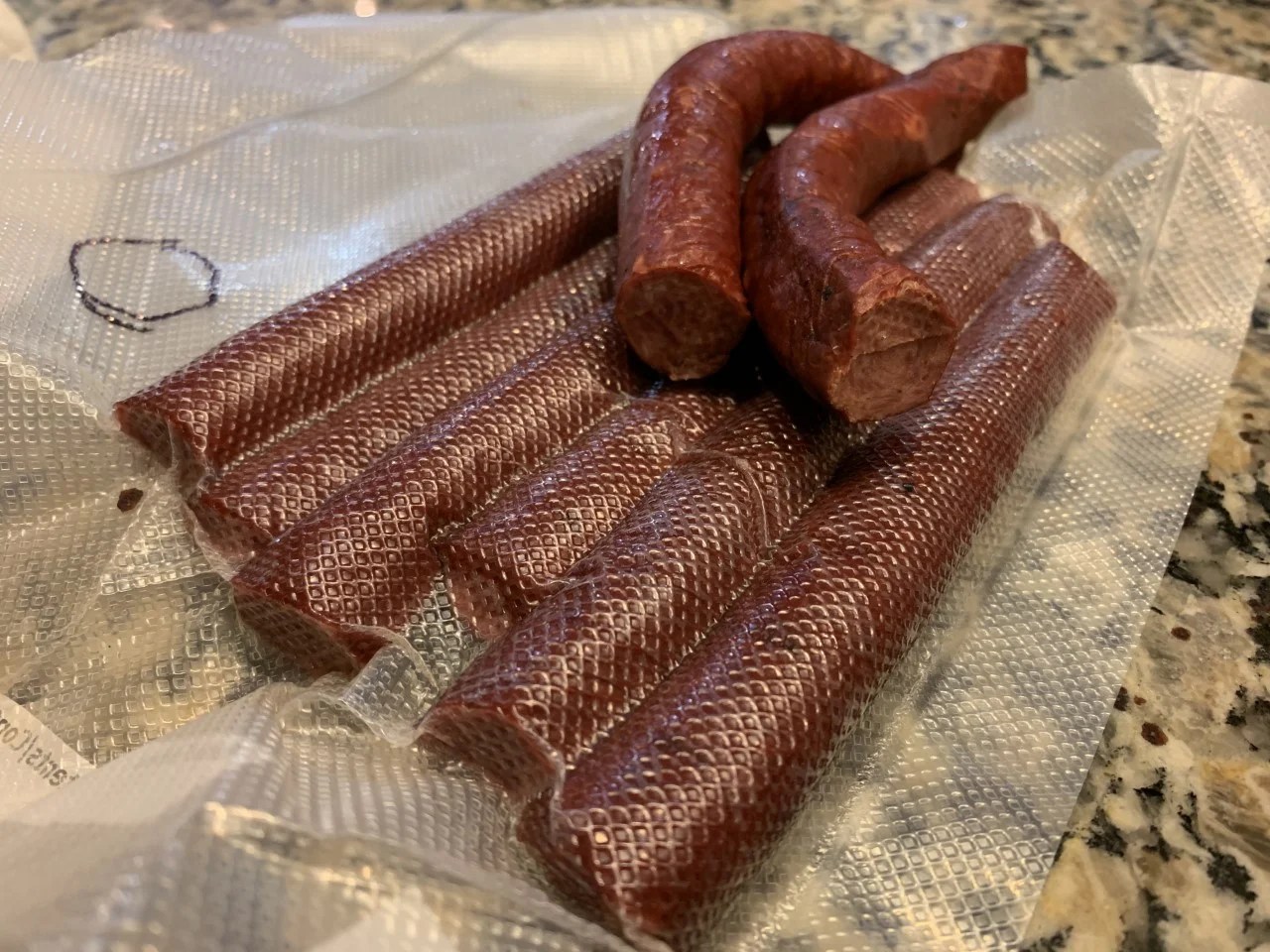
Making the sausage (for me, at least) is very simple. I find the Hi Mountain snack stick kits to be easy and delicious. Maybe someday I’ll concoct my own cure and seasoning mix, but if it ain’t broke, why fix it? You’ll want to weigh your bear meat in appropriate proportions, and I usually add pork fat to make it about 5 to 7 percent of the total weight. If you have saved fat from your fall bear, you can just use that.
Grind the meat and pork, mix together, and then grind again. Then you can add in the cure and seasoning. At that point, you’re ready to stuff the sausage into casings, let it rest, and smoke according to the directions.
Small diameter sausage sticks smoke relatively quickly, and depending on your setup, there can be a little bit of a learning curve, so always temperature check, and start with small batches of sticks. When smoking summer sausages, rotate them during the smoking process and monitor temperatures. When finished, drop them in a bath of ice water to prevent them from overcooking. You’ll end up with a great product and a way to use your bear meat that everyone will enjoy.
FAQ’s About Bear Meat
Bear meat is very good to eat when cared for and prepared properly, though bears that have been eating salmon or carrion won’t taste as good.
Bear meat is legal to have and eat in the US, but generally not legal to sell or barter.
Many people do, in fact, eat bear meat. Most people who believe all bear meat is bad to eat, haven’t tried it.
Bear meat is safe to eat, but it’s important to cook to an internal temperature of at least 165 degrees F to kill any harmful parasites such as trichinella.

